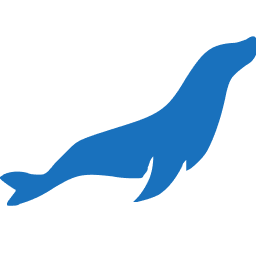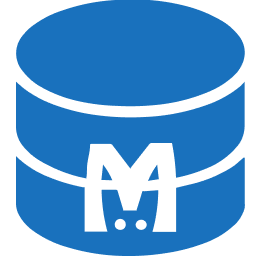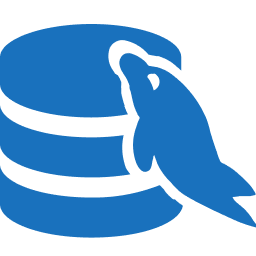You are looking at the documentation of a prior release. To read the documentation of the latest release, please
visit here.
New to KubeDB? Please start here.
Autoscaling the Compute Resource of a Cassandra
This guide will show you how to use KubeDB to autoscaling compute resources i.e. cpu and memory of a Cassandra.
Before You Begin
At first, you need to have a Kubernetes cluster, and the
kubectlcommand-line tool must be configured to communicate with your cluster.Install
KubeDBProvisioner, Ops-manager and Autoscaler operator in your cluster following the steps here.Install
Metrics Serverfrom hereYou should be familiar with the following
KubeDBconcepts:
To keep everything isolated, we are going to use a separate namespace called demo throughout this tutorial.
$ kubectl create ns demo
namespace/demo created
Note: YAML files used in this tutorial are stored in docs/examples/cassandra directory of kubedb/docs repository.
Autoscaling of Cassandra
In this section, we are going to deploy a Cassandra with version 5.0.3 Then, in the next section we will set up autoscaling for this Cassandra using CassandraAutoscaler CRD. Below is the YAML of the Cassandra CR that we are going to create,
apiVersion: kubedb.com/v1alpha2
kind: Cassandra
metadata:
name: cassandra-autoscale
namespace: demo
spec:
version: "5.0.3"
topology:
rack:
- name: r0
replicas: 2
storage:
accessModes:
- ReadWriteOnce
resources:
requests:
storage: 600Mi
podTemplate:
spec:
containers:
- name: cassandra
resources:
limits:
memory: 2Gi
cpu: 1000m
requests:
memory: 600Mi
cpu: 500m
deletionPolicy: WipeOut
Let’s create the Cassandra CRO we have shown above,
$ kubectl create -f https://github.com/kubedb/docs/raw/v2025.7.31/docs/examples/cassandra/autoscaling/compute/cassandra-autoscale.yaml
cassandra.kubedb.com/cassandra-autoscale created
Now, wait until cassandra-autoscale has status Ready. i.e,
$ kubectl get cas -n demo
NAME TYPE VERSION STATUS AGE
cassandra-autoscale kubedb.com/v1alpha2 5.0.3 Ready 22s
Let’s check the Pod containers resources,
$ kubectl get pod -n demo cassandra-autoscale-rack-r0-0 -o json | jq '.spec.containers[].resources'
{
"limits": {
"cpu": "1",
"memory": "2Gi"
},
"requests": {
"cpu": "500m",
"memory": "600Mi"
}
}
Let’s check the Cassandra resources,
$ kubectl get cassandra -n demo cassandra-autoscale -o json | jq '.spec.topology.rack[0].podTemplate.spec.containers[0].resources'
{
"limits": {
"cpu": "1",
"memory": "2Gi"
},
"requests": {
"cpu": "500m",
"memory": "600Mi"
}
}
You can see from the above outputs that the resources are same as the one we have assigned while deploying the cassandra.
We are now ready to apply the CassandraAutoscaler CRO to set up autoscaling for this database.
Compute Resource Autoscaling
Here, we are going to set up compute (cpu and memory) autoscaling using a CassandraAutoscaler Object.
Create CassandraAutoscaler Object
In order to set up compute resource autoscaling for this Cassandra, we have to create a CassandraAutoscaler CRO with our desired configuration. Below is the YAML of the CassandraAutoscaler object that we are going to create,
apiVersion: autoscaling.kubedb.com/v1alpha1
kind: CassandraAutoscaler
metadata:
name: cassandra-autoscale-ops
namespace: demo
spec:
databaseRef:
name: cassandra-autoscale
compute:
cassandra:
trigger: "On"
podLifeTimeThreshold: 5m
resourceDiffPercentage: 20
minAllowed:
cpu: 600m
memory: 1.2Gi
maxAllowed:
cpu: 1
memory: 2Gi
controlledResources: ["cpu", "memory"]
containerControlledValues: "RequestsAndLimits"
Here,
spec.databaseRef.namespecifies that we are performing compute resource autoscaling oncassandra-autoscale.spec.compute.cassandra.triggerspecifies that compute resource autoscaling is enabled for this cassandra.spec.compute.cassandra.podLifeTimeThresholdspecifies the minimum lifetime for at least one of the pod to initiate a vertical scaling.spec.compute.cassandra.resourceDiffPercentagespecifies the minimum resource difference in percentage. The default is 10%. If the difference between current & recommended resource is less than ResourceDiffPercentage, Autoscaler Operator will ignore the updating.spec.compute.cassandra.minAllowedspecifies the minimum allowed resources for this cassandra.spec.compute.cassandra.maxAllowedspecifies the maximum allowed resources for this cassandra.spec.compute.cassandra.controlledResourcesspecifies the resources that are controlled by the autoscaler.spec.compute.cassandra.containerControlledValuesspecifies which resource values should be controlled. The default is “RequestsAndLimits”.spec.opsRequestOptionscontains the options to pass to the created OpsRequest. It has 2 fields. Know more about them here : timeout, apply.
Let’s create the CassandraAutoscaler CR we have shown above,
$ kubectl apply -f https://github.com/kubedb/docs/raw/v2025.7.31/docs/examples/cassandra/autoscaling/compute/cassandra-autoscaler-ops.yaml
cassandraautoscaler.autoscaling.kubedb.com/cassandra-autoscaler-ops created
Verify Autoscaling is set up successfully
Let’s check that the cassandraautoscaler resource is created successfully,
$ kubectl get cassandraautoscaler -n demo
NAME AGE
cassandra-autoscale-ops 6m55s
$ kubectl describe cassandraautoscaler cassandra-autoscale-ops -n demo
Name: cassandra-autoscale-ops
Namespace: demo
Labels: <none>
Annotations: <none>
API Version: autoscaling.kubedb.com/v1alpha1
Kind: CassandraAutoscaler
Metadata:
Creation Timestamp: 2025-07-14T09:51:36Z
Generation: 1
Owner References:
API Version: kubedb.com/v1alpha2
Block Owner Deletion: true
Controller: true
Kind: Cassandra
Name: cassandra-autoscale
UID: 4abde3d7-a0f4-4f4e-bcdc-6518444f1e23
Resource Version: 10064
UID: e29a989b-becd-4812-9ab3-65adead1d578
Spec:
Compute:
Cassandra:
Container Controlled Values: RequestsAndLimits
Controlled Resources:
cpu
memory
Max Allowed:
Cpu: 2
Memory: 3Gi
Min Allowed:
Cpu: 800m
Memory: 2Gi
Pod Life Time Threshold: 5m0s
Resource Diff Percentage: 20
Trigger: On
Database Ref:
Name: cassandra-autoscale
Ops Request Options:
Apply: IfReady
Status:
Checkpoints:
Cpu Histogram:
Bucket Weights:
Index: 1
Weight: 4631
Index: 3
Weight: 10000
Index: 44
Weight: 6125
Reference Timestamp: 2025-07-14T10:10:00Z
Total Weight: 0.4133802430760871
First Sample Start: 2025-07-14T10:09:25Z
Last Sample Start: 2025-07-14T10:11:26Z
Last Update Time: 2025-07-14T10:11:46Z
Memory Histogram:
Reference Timestamp: 2025-07-14T10:15:00Z
Ref:
Container Name: cassandra
Vpa Object Name: cassandra-autoscale-rack-r0
Total Samples Count: 4
Version: v3
Conditions:
Last Transition Time: 2025-07-14T10:09:46Z
Message: Successfully created CassandraOpsRequest demo/casops-cassandra-autoscale-rack-r0-kefyuq
Observed Generation: 1
Reason: CreateOpsRequest
Status: True
Type: CreateOpsRequest
Vpas:
Conditions:
Last Transition Time: 2025-07-14T10:09:46Z
Status: True
Type: RecommendationProvided
Recommendation:
Container Recommendations:
Container Name: cassandra
Lower Bound:
Cpu: 800m
Memory: 2Gi
Target:
Cpu: 1836m
Memory: 2Gi
Uncapped Target:
Cpu: 1836m
Memory: 1168723596
Upper Bound:
Cpu: 2
Memory: 3Gi
Vpa Name: cassandra-autoscale-rack-r0
Events: <none>
So, the Cassandraautoscaler resource is created successfully.
you can see in the Status.VPAs.Recommendation section, that recommendation has been generated for our Cassandra. Our autoscaler operator continuously watches the recommendation generated and creates an cassandraopsrequest based on the recommendations, if the cassandra pods are needed to scaled up or down.
Let’s watch the cassandraopsrequest in the demo namespace to see if any cassandraopsrequest object is created. After some time you’ll see that a cassandraopsrequest will be created based on the recommendation.
$ watch kubectl get cassandraopsrequest -n demo
Every 2.0s: kubectl get cassandraopsrequest -n demo
NAME TYPE STATUS AGE
casops-cassandra-autoscale-rack-r0-kefyuq VerticalScaling Progressing 1m28s
Let’s wait for the ops request to become successful.
$ watch kubectl get cassandraopsrequest -n demo
Every 2.0s: kubectl get cassandraopsrequest -n demo
NAME TYPE STATUS AGE
casops-cassandra-autoscale-rack-r0-kefyuq VerticalScaling Successful 3m34s
We can see from the above output that the CassandraOpsRequest has succeeded. If we describe the CassandraOpsRequest we will get an overview of the steps that were followed to scale the Cassandra.
$ kubectl describe cassandraopsrequest -n demo casops-cassandra-autoscale-rack-r0-kefyuq
Name: casops-cassandra-autoscale-rack-r0-kefyuq
Namespace: demo
Labels: app.kubernetes.io/component=database
app.kubernetes.io/instance=cassandra-autoscale
app.kubernetes.io/managed-by=kubedb.com
app.kubernetes.io/name=cassandras.kubedb.com
Annotations: <none>
API Version: ops.kubedb.com/v1alpha1
Kind: CassandraOpsRequest
Metadata:
Creation Timestamp: 2025-07-14T10:09:46Z
Generation: 1
Owner References:
API Version: autoscaling.kubedb.com/v1alpha1
Block Owner Deletion: true
Controller: true
Kind: CassandraAutoscaler
Name: cassandra-autoscale-ops
UID: e29a989b-becd-4812-9ab3-65adead1d578
Resource Version: 10149
UID: e55a25aa-c629-48a8-a6d6-ff7df56edf2d
Spec:
Apply: IfReady
Database Ref:
Name: cassandra-autoscale
Type: VerticalScaling
Vertical Scaling:
Node:
Resources:
Limits:
Cpu: 1600m
Memory: 7330077518
Requests:
Cpu: 800m
Memory: 2Gi
Status:
Conditions:
Last Transition Time: 2025-07-14T10:09:46Z
Message: Cassandra ops-request has started to vertically scaling the Cassandra nodes
Observed Generation: 1
Reason: VerticalScaling
Status: True
Type: VerticalScaling
Last Transition Time: 2025-07-14T10:09:49Z
Message: Successfully updated PetSets Resources
Observed Generation: 1
Reason: UpdatePetSets
Status: True
Type: UpdatePetSets
Last Transition Time: 2025-07-14T10:12:34Z
Message: Successfully Restarted Pods With Resources
Observed Generation: 1
Reason: RestartPods
Status: True
Type: RestartPods
Last Transition Time: 2025-07-14T10:09:54Z
Message: get pod; ConditionStatus:True; PodName:cassandra-autoscale-rack-r0-0
Observed Generation: 1
Status: True
Type: GetPod--cassandra-autoscale-rack-r0-0
Last Transition Time: 2025-07-14T10:09:54Z
Message: evict pod; ConditionStatus:True; PodName:cassandra-autoscale-rack-r0-0
Observed Generation: 1
Status: True
Type: EvictPod--cassandra-autoscale-rack-r0-0
Last Transition Time: 2025-07-14T10:09:59Z
Message: running pod; ConditionStatus:False
Observed Generation: 1
Status: False
Type: RunningPod
Last Transition Time: 2025-07-14T10:10:34Z
Message: get pod; ConditionStatus:True; PodName:cassandra-autoscale-rack-r0-1
Observed Generation: 1
Status: True
Type: GetPod--cassandra-autoscale-rack-r0-1
Last Transition Time: 2025-07-14T10:10:34Z
Message: evict pod; ConditionStatus:True; PodName:cassandra-autoscale-rack-r0-1
Observed Generation: 1
Status: True
Type: EvictPod--cassandra-autoscale-rack-r0-1
Last Transition Time: 2025-07-14T10:12:34Z
Message: Successfully completed the vertical scaling for Cassandra
Observed Generation: 1
Reason: Successful
Status: True
Type: Successful
Observed Generation: 1
Phase: Successful
Events:
Type Reason Age From Message
---- ------ ---- ---- -------
Normal Starting 4m17s KubeDB Ops-manager Operator Start processing for CassandraOpsRequest: demo/casops-cassandra-autoscale-rack-r0-kefyuq
Normal Starting 4m17s KubeDB Ops-manager Operator Pausing Cassandra databse: demo/cassandra-autoscale
Normal Successful 4m17s KubeDB Ops-manager Operator Successfully paused Cassandra database: demo/cassandra-autoscale for CassandraOpsRequest: casops-cassandra-autoscale-rack-r0-kefyuq
Normal UpdatePetSets 4m14s KubeDB Ops-manager Operator Successfully updated PetSets Resources
Warning get pod; ConditionStatus:True; PodName:cassandra-autoscale-rack-r0-0 4m9s KubeDB Ops-manager Operator get pod; ConditionStatus:True; PodName:cassandra-autoscale-rack-r0-0
Warning evict pod; ConditionStatus:True; PodName:cassandra-autoscale-rack-r0-0 4m9s KubeDB Ops-manager Operator evict pod; ConditionStatus:True; PodName:cassandra-autoscale-rack-r0-0
Warning running pod; ConditionStatus:False 4m4s KubeDB Ops-manager Operator running pod; ConditionStatus:False
Warning get pod; ConditionStatus:True; PodName:cassandra-autoscale-rack-r0-1 3m29s KubeDB Ops-manager Operator get pod; ConditionStatus:True; PodName:cassandra-autoscale-rack-r0-1
Warning evict pod; ConditionStatus:True; PodName:cassandra-autoscale-rack-r0-1 3m29s KubeDB Ops-manager Operator evict pod; ConditionStatus:True; PodName:cassandra-autoscale-rack-r0-1
Warning get pod; ConditionStatus:True; PodName:cassandra-autoscale-rack-r0-0 2m49s KubeDB Ops-manager Operator get pod; ConditionStatus:True; PodName:cassandra-autoscale-rack-r0-0
Warning evict pod; ConditionStatus:True; PodName:cassandra-autoscale-rack-r0-0 2m49s KubeDB Ops-manager Operator evict pod; ConditionStatus:True; PodName:cassandra-autoscale-rack-r0-0
Warning get pod; ConditionStatus:True; PodName:cassandra-autoscale-rack-r0-1 2m9s KubeDB Ops-manager Operator get pod; ConditionStatus:True; PodName:cassandra-autoscale-rack-r0-1
Warning evict pod; ConditionStatus:True; PodName:cassandra-autoscale-rack-r0-1 2m9s KubeDB Ops-manager Operator evict pod; ConditionStatus:True; PodName:cassandra-autoscale-rack-r0-1
Normal RestartPods 89s KubeDB Ops-manager Operator Successfully Restarted Pods With Resources
Normal Starting 89s KubeDB Ops-manager Operator Resuming Cassandra database: demo/cassandra-autoscale
Normal Successful 89s KubeDB Ops-manager Operator Successfully resumed Cassandra database: demo/cassandra-autoscale for CassandraOpsRequest: casops-cassandra-autoscale-rack-r0-kefyuq
Now, we are going to verify from the Pod, and the Cassandra yaml whether the resources of the Cassandra has updated to meet up the desired state, Let’s check,
$ kubectl get pod -n demo cassandra-autoscale-rack-r0-0 -o json | jq '.spec.containers[].resources'
{
"limits": {
"cpu": "1600m",
"memory": "7330077518"
},
"requests": {
"cpu": "800m",
"memory": "2Gi"
}
}
$ kubectl get cassandra -n demo cassandra-autoscale -o json | jq '.spec.topology.rack[0].podTemplate.spec.containers[0].resources'
{
"limits": {
"cpu": "1",
"memory": "2Gi"
},
"requests": {
"cpu": "500m",
"memory": "600Mi"
}
}
The above output verifies that we have successfully auto-scaled the resources of the cassandra.
Cleaning Up
To clean up the Kubernetes resources created by this tutorial, run:
kubectl delete cas -n demo cassandra-autoscale



































